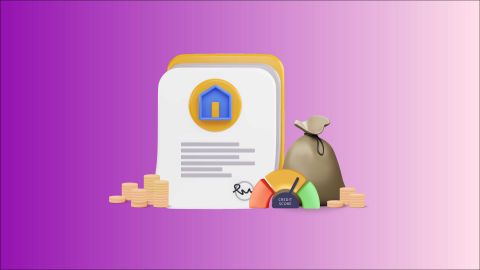Home loan prepayment calculator - Calculate EMI after prepayment
Many borrowers look for ways to reduce their home loan burden and save on interest costs, which is where a Home Loan Prepayment Calculator proves highly useful. This online tool helps you understand how making part payments on your home loan can impact your repayment plan. When you make a lump-sum payment in additon to your regular EMIs, it lowers your outstanding principal, leading to lower interest outgo over time. The calculator clearly shows how much you can save and helps you decide whether to reduce your EMI amount or shorten the loan tenure for quicker repayment.
What is a home loan prepayment calculator?
A home loan prepayment calculator is a simple digital tool that allows borrowers to see the effect of making additional payments on their home loan. By entering details such as the loan amount, interest rate, tenure, and prepayment plan, it shows how much interest you can save and how quickly you can repay.
How to calculate the new EMI after making a part payment on home loans
The formula to calculate home loan prepayment typically involves calculating the new outstanding loan balance after making the prepayment. Here's the general formula:
Prеpaymеnt Savings = (p × t × (1+t)^x) / ((1+t)^x - 1) - (EMI × x)
Here:
P = Principal loan amount
T = Monthly intеrеst ratе
x = Rеmaining loan tеnurе in months
EMI = Equatеd Monthly Installmеnt
Example calculation using the home loan prepayment calculator
Let us look at an example of how you can calculate the home loan prepayment.
- Loan amount: Rs. 30,00,000
- Interest rate: 9.25 percent
- Loan tenure: 25 years
- Planned prepayments: Rs. 2,00,000 each at months 6, 12, and 18
Results:
- Original EMI: Rs. 25,691
- New EMI after prepayment (if you reduce EMI): Rs. 20,496.96
- Total interest without prepayment: Rs. 47,07,436.58
- Total interest with prepayment: Rs. 38,11,540.07 (while reducing EMI) or Rs. 20,53,594.11 (while reducing tenure)
- Interest savings: Rs. 8,95,896.51 (while reducing the EMI)
- Interest savings: Rs. 26,53,842.47 (while reducing the tenure to 14 years and 6 months)
Putting these figures into the home loan prepayment calculator shows how three early payments cut both interest and years. You see that the extra Rs. 6,00,000 paid in the first two years drops the monthly EMIs by over Rs. 5,000 or shortens the term by about ten years, letting you clear the debt sooner at a far lower cost. Adjust the amount, timing, or frequency to test other plans and pick the one that fits your budget best.
This example is only for quick illustration. Please do your own calculation using the prepayment calculator.
Planning to buy your dream home and want to explore competitive loan options? Bajaj Finserv offers attractive interest rates starting from 7.45%* p.a with flexible repayment terms up to 32 years. Check your eligibility and discover loan offers tailored to your financial needs. You may already be eligible, find out by entering your mobile number and OTP.
How to use home loan part payment calculator?
Here’s a step-by-step guide on how a home loan prepayment calculator works:
Step 1: Enter outstanding loan amount: Input the remaining balance of your home loan. This is the amount you still owe to the lender.
Step 2: Enter loan tenure: Provide the remaining tenure of your loan in months or years. This is the period left for your loan repayment.
Step 3: Enter rate of interest: Input the current interest rate applicable to your home loan. This rate affects your EMI calculation.
Step 4: Enter part-prepayment amount: Specify the amount you plan to prepay. This is the extra payment you intend to make towards your loan principal.
Step 5: Calculate: Click on the ‘Calculate’ button. The calculator will process the information and display your new EMI amount.
Step 6: Review results: The calculator will show your revised EMI, total interest saved, and the new loan tenure if applicable.
Using this tool helps you understand the financial impact of making a part-prepayment on your home loan, allowing you to plan your finances better.
Key features of home loan calculator with prepayment
The following are some of the important features of a home loan prepayment calculator:
- Accurate interest savings: Shows exactly how much interest you save, in rupees, after every extra payment you enter.
- EMI reduction: Using the home loan prepayment calculator, you can see a new, lower EMI within seconds for smoother monthly cash flow.
- Tenure reduction: The tool tells you the fresh end date straight away, so you know how many years you cut off.
- Flexible prepayment inputs: Add several prepayment amounts on dates you choose and watch their cumulative impact on interest and loan length.
- Instant results: Figures update in seconds on any device, helping you decide quickly without manual maths or sign-ups.
Benefits of using a home loan prepayment calculator
See the impact of partial payments on your home loan and plan smarter repayments.
- Helps estimate the impact of prepaying on loan tenure: By using a prepayment calculator, borrowers can understand how making extra payments towards their home loan can reduce the overall tenure of the loan.
- Saves money on interest: It allows borrowers to see how prepayments can significantly reduce the total interest paid over the life of the loan, potentially saving them a substantial amount of money.
- Assists in financial planning: By providing a clear breakdown of how prepayments affect the loan balance and repayment schedule, borrowers can better plan their finances and decide on the most suitable prepayment strategy.
- Enables comparison of scenarios: Borrowers can use the calculator to compare different prepayment scenarios, such as varying prepayment amounts or frequencies, to determine the most beneficial approach for their financial situation.
- Empowers informed decision-making: Armed with the information provided by the prepayment calculator, borrowers can make well-informed decisions regarding their home loan prepayment strategy, optimising their financial outcomes.
Whether you are considering your first home purchase or looking to refinance your existing loan, Bajaj Finserv provides comprehensive financing solutions with hassle-free processing and quick approval in just 48 hours*. Check your eligibility for a home loan that fits your budget and financial goals. You may already be eligible, find out by entering your mobile number and OTP.
How does home loan prepayment work? An example
Prepaying a home loan means paying off a portion of your principal before it is due, which helps reduce both interest costs and loan duration. Let us consider an example to understand how different prepayment strategies affect your loan.
Suppose Anita has taken a home loan of Rs. 40 lakh for 20 years at an interest rate of 8.2% per annum. Her monthly EMI works out to approximately Rs. 34,115. She is considering using her savings to reduce her loan burden. Let’s see how her decision changes the outcome in different cases:
Scenario |
Total interest paid (approx) |
Loan tenure reduced |
No prepayment |
Rs. 41.9 lakh |
20 years |
Rs. 80,000 annually |
Rs. 29 lakh |
15 years 1 month |
Rs. 40,000 every 6 months |
Rs. 27.5 lakh |
14 years 7 months |
Rs. 5,000 monthly |
Rs. 26.2 lakh |
14 years 2 months |
This shows that even smaller, regular prepayments create a big difference over time. By using a home loan prepayment calculator, borrowers can decide which option works best for them based on affordability and long-term savings.
Ready to start your homeownership journey with smart financial planning? Bajaj Finserv offers loans up to Rs. 15 Crore* with competitive rates and flexible tenure options to help you achieve your property goals faster. Check your eligibility and explore personalised loan offers designed for your income profile. You may already be eligible, find out by entering your mobile number and OTP.
Why home loan prepayment is important for buyers
Paying off your home loan ahead of schedule through prepayments offers several key benefits:
Interest savings:
Reduces the total interest paid over the loan tenure, resulting in significant savings.Faster debt clearance:
Accelerates the journey to full homeownership, freeing you from debt sooner.Financial freedom:
Allows for increased financial flexibility by eliminating a major financial obligation.Improved credit score:
Demonstrates financial discipline, positively impacting your credit score.Potential interest rate savings:
May open opportunities to negotiate lower home loan interest rates or refinance the loan.Reduced stress:
Minimises long-term financial stress and uncertainty associated with debt.Investment opportunities:
Creates room for investing in other avenues once the home loan burden is lifted.Home equity build-up:
Accelerates the accumulation of home equity, increasing overall property ownership.
Making informed decisions about home loans and prepayments starts with choosing the right lender who offers transparent terms and competitive rates. Bajaj Finserv provides comprehensive financing solutions with no hidden charges and flexible prepayment options for individual borrowers. Check your eligibility for a home loan that supports your long-term financial planning. You may already be eligible, find out by entering your mobile number and OTP.
Other popular calculators for your financial calculations
|
Bajaj Finserv app for all your financial needs and goals
Trusted by 50 million+ customers in India, Bajaj Finserv App is a one-stop solution for all your financial needs and goals.
You can use the Bajaj Finserv App to:
- Apply for loans online, such as Instant Personal Loan, Home Loan, Business Loan, Gold Loan, and more.
- Invest in fixed deposits and mutual funds on the app.
- Choose from multiple insurance for your health, motor and even pocket insurance, from various insurance providers.
- Pay and manage your bills and recharges using the BBPS platform. Use Bajaj Pay and Bajaj Wallet for quick and simple money transfers and transactions.
- Apply for Insta EMI Card and get a pre-qualified limit on the app. Explore over 1 million products on the app that can be purchased from a partner store on Easy EMIs.
- Shop from over 100+ brand partners that offer a diverse range of products and services.
- Use specialised tools like EMI calculators, SIP Calculators
- Check your credit score, download loan statements and even get quick customer support—all on the app.
Download the Bajaj Finserv App today and experience the convenience of managing your finances on one app.
Frequently asked questions
Before prepaying your home loan, assess your age, financial security, and retirement plans. Compare the tax benefits you may lose against the savings from lower interest. Evaluate your investment returns versus loan interest, and ensure you have sufficient funds left for emergencies and future needs. Timing is important—early prepayments generally save more than late ones.
Choosing between EMI reduction and tenure reduction depends on your priorities. If you want more cash in hand each month for other expenses or investments, reducing EMI helps. However, if your aim is to save maximum interest and close the loan quickly, shortening the tenure is the smarter choice. Both options can be simulated using a home loan prepayment calculator.
When selecting a home loan, having flexible prepayment options can significantly impact your savings. Bajaj Finserv offers zero foreclosure charges for individual borrowers with floating rates, making it easier to prepay without penalties. Check your eligibility for a home loan with favourable prepayment terms. You may already be eligible, find out by entering your mobile number and OTP.
To close a 30-year home loan in 10 years, make frequent prepayments, either annually or monthly. Increase your EMI contribution whenever your income rises, and use bonuses or windfalls towards the loan. Regular extra payments reduce the outstanding principal, significantly lowering interest and tenure. A home loan prepayment calculator helps you plan the right repayment schedule.
Yes, prepaying your home loan is usually beneficial as it reduces the principal balance, thereby cutting down the interest you would otherwise pay. This helps you become debt-free sooner. However, before prepaying, check if your lender has penalties or charges. Using a home loan prepayment calculator gives you a clear idea of how much you could save.
After the initial lock-in period specified by the lender, you can generally prepay your home loan multiple times. Some banks allow unlimited part-prepayments, while others may have restrictions. Always check the lender’s terms and possible charges. Frequent smaller prepayments can be as effective as occasional large ones, and a prepayment calculator can help you understand the savings.
You can close a 20-year loan in 10 years by systematically increasing your EMI every year as your income rises, and by making regular prepayments. For example, raising your EMI by 10% annually or prepaying 5% of your outstanding loan each year significantly cuts the tenure. Planning through a home loan prepayment calculator helps you achieve this target.
If you prepay your home loan early, the outstanding principal reduces, which lowers your future EMI obligations or shortens your loan tenure. This reduces the interest paid over the loan’s life. It also gives you financial freedom sooner. You may choose whether to keep EMIs smaller or close the loan faster, depending on your financial priorities.
Prepayments directly reduce the principal outstanding, which in turn cuts interest charges. By choosing to maintain the EMI but shorten the tenure, you repay the loan quicker. Using extra funds such as annual bonuses, incentives, or tax refunds for prepayment is a smart way to reduce tenure. A prepayment calculator helps estimate the exact savings.
Banks and financial institutions often have guidelines for prepayment. You may need to pay at least two EMIs worth of the loan amount for part-prepayment, and in some cases, charges may apply. Some lenders impose limits or penalties, while others allow free prepayments. Always check your loan agreement and calculate the benefits before proceeding with prepayment.
Choosing a lender with borrower-friendly prepayment policies can save you thousands in unnecessary charges. Bajaj Finserv offers transparent terms with no prepayment penalties for individual borrowers, giving you the freedom to repay faster when financially possible. Check your eligibility and discover loan offers with flexible repayment options. You may already be eligible, find out by entering your mobile number and OTP.
Yes, while the calculator provides accurate savings estimates, it doesn’t factor in personal elements like retirement timing, income stability, or investment returns. Borrowers should consider age, cash flow needs, and tax benefits before making prepayments. The tool is best used as a guide, but actual decisions should be based on a complete financial assessment.
Yes, a home loan prepayment calculator can be used for different types of home loan products, whether they are for purchasing a house, constructing one, or even a loan against property. The principle remains the same—it shows you how prepayments affect your interest and tenure, regardless of the home loan category or lender.








